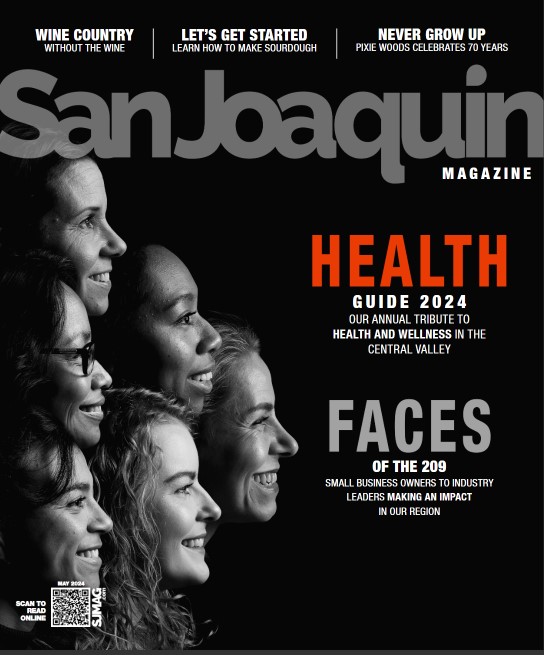
They say breast is best. And, according to the Centers for Disease Control and Prevention, breastfeeding rates are up.
Eighty-three percent of babies breastfeed from birth, up 10% between 2004 and 2014. More mothers are going to classes to learn more about breastfeeding and how it benefits the baby. Babies are also breastfed for longer, lasting at least six months.
We talked to Eugenia Hurlbut, DO, of Gill OBGYN Medical Group in Stockton for her feedback on the subject. If you do plan on breastfeeding your baby, here are some interesting facts you probably didn’t realize:
Breast milk comes in different colors depending on your diet
Breast milk doesn’t look like a glass of milk you get at the store. The hue can run from white to yellowish to pink, blue, or even green. “The color can be influenced by diet,” Dr. Hurlbut says, “so if you eat a lot of red beets, the milk is likely to be pinkish!”
Colostrum is very nutritious and can provide immunity to your newborn.
Colostrum is the first milk that “lets down.” It too can be colorful, frequently dark yellow or orange from high levels of beta-carotene. When you breastfeed, you pass on your own antibodies to your baby keeping them immune from diseases. A Brigham Young-Stanford-Harvard research team identified a molecule in the mother’s breast milk that defends the baby against certain intestinal infections. Formula-fed infants have twice the incidence of those kind of illnesses as breastfed babies. This is quite comforting to know. Many mothers fear the unknown for their vulnerable newborn babies; illnesses, diseases. it can be quite daunting wondering if your child is safe. Can they get influenza? Can they get bronchitis? can they get chickenpox? The power of mother’s milk is stronger than we realise.
You may not be able to breastfeed immediately.
Breast milk sometimes doesn’t come in right away. There is usually a bigger let down by the third day of breastfeeding and production will typically increase from there. Dr. Hurlbut says not to get discouraged, “So, stick with it!”
Hygiene is important.
While babies build some immunity while inside the womb, they are still extremely vulnerable to germs, illness and diseases. This is why cleaning up after breast feeding is so important because it will allow you to achieve a healthy and safe breast pumping experience, for you and your child. If you don’t do it properly, it could make you or your baby sick.
Breastfeeding reduces the risk of certain diseases.
Because there is a tendency to suppress ovulation during breastfeeding, it can reduce the risk of ovarian cancer. Dr. Hurlbut says decreased numbers of ovulations means less scarring of the ovary and less chance for precancerous, dysplastic cells. Studies also suggest a lower rate of heart disease in breastfeeding moms later in life, but more research is needed to determine why.
You should continue taking your prenatal vitamins.
During the course of breastfeeding, mothers lose calcium in their bones due to the loss of estrogen. It also means a loss of calcium in the milk for the growing baby. Calcium stores return to normal levels within six months of weaning but continuing to take your vitamins is best for you and your baby’s health.
Breast implants may pose a problem in breastfeeding.
Dr. Hurlbut says breast implants and reductions can disrupt the flow of milk through the breast ducts and prevent breastfeeding or decrease milk production. It can also increase incidence of breast engorgement and mastitis. Other special conditions that may limit milk production are women with hypoplastic breasts (breasts that are underdeveloped) and women with Polycystic Ovarian Syndrome. These conditions don’t exclude breastfeeding, but these women may have issues with having enough supply and may need to supplement with formula.
Consistent breastfeeding burns up to 500 calories a day.
A 2008 Danish study showed the “slimming effects” of breastfeeding. Breastfeeding was associated with a lower postpartum weight and body mass index. It could, in fact, eliminate weight retention by six months postpartum if the recommended breastfeeding regimen (up to one year) was followed.
The right breast produces more milk.
Some studies have shown that the right breast produces more milk than the left one. Milk production is a little over sixty-five percent greater in the right breast and typically occurs early in lactation. Although, being a first-time mom versus a seasoned breastfeeder does make a difference. However, total milk output is not affected.
When it comes to breastfeeding, there are plenty of resources available. “The bottom line is,” Dr. Hurlbut advises, “if you have questions or concerns about breastfeeding, ask your obstetrician, your pediatrician, or primary care physicians before or after birth!”

